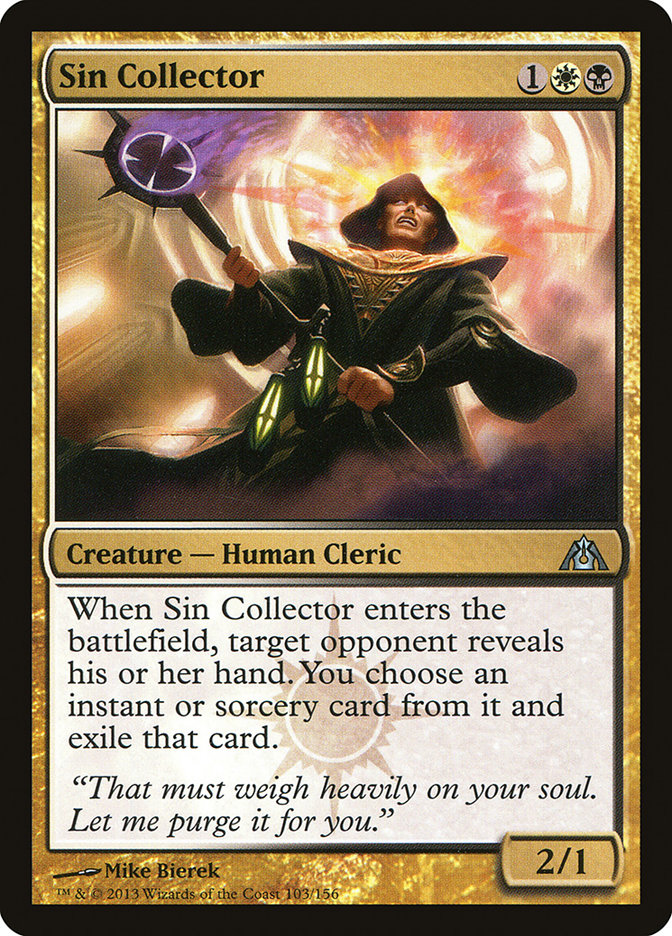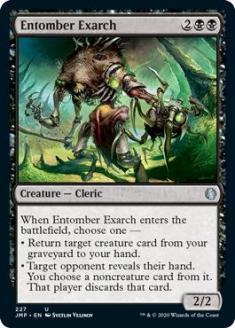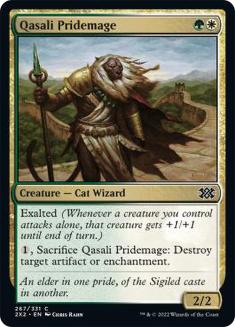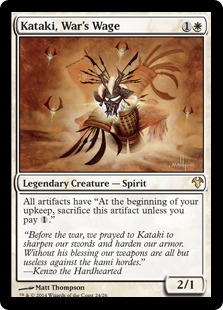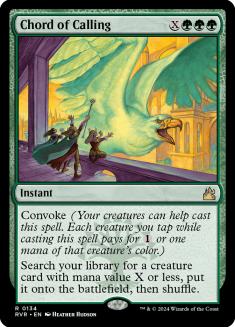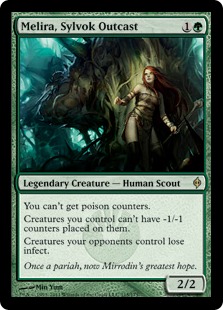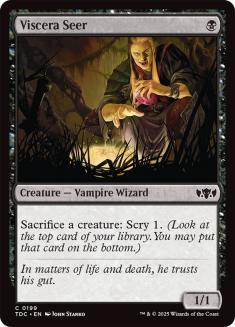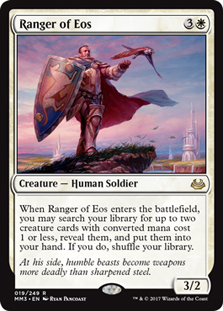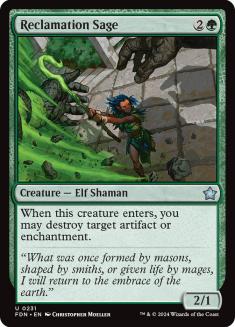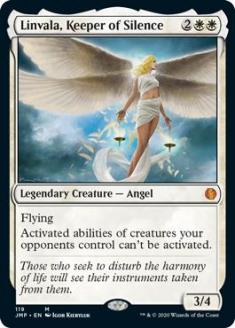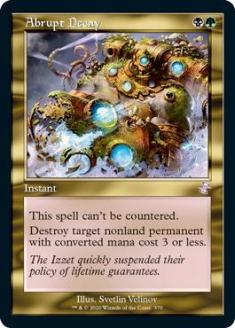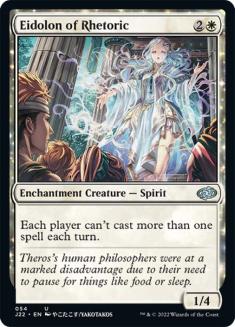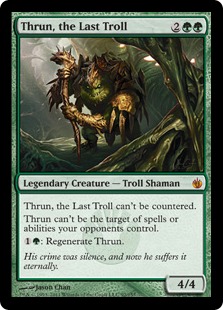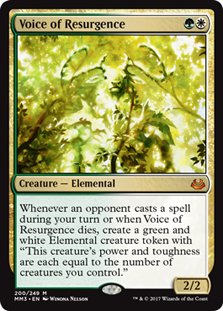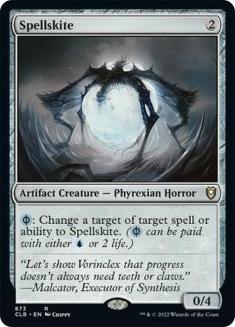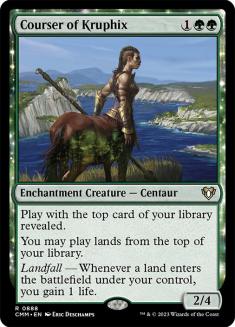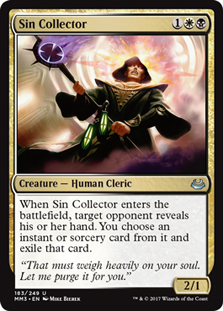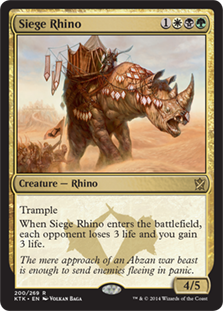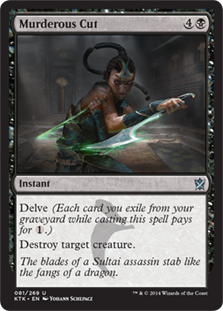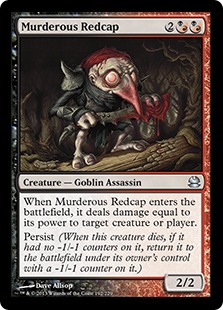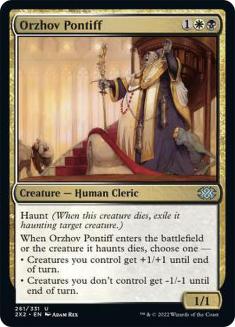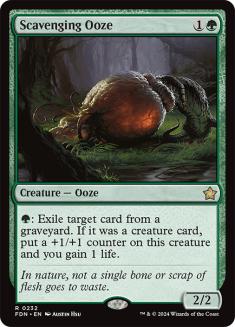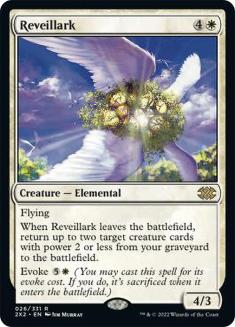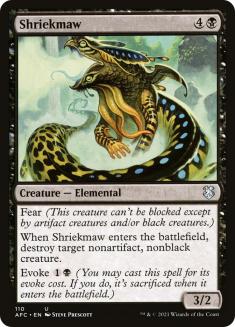Preparing for Modern is difficult, since the format’s so big. I haven’t really been happy with a Modern deck I’ve played since Pro Tour Philadelphia,
though sometimes Pod and Storm have seemed fine. Several weeks ago, I started working on Modern, starting by looking at Treasure Cruise and Dig Through
Time strategies. Delver seemed like it should be among the best decks, and it still seemed like there might be something to Jeskai Ascendancy. I tried to
look at Jeskai Ascendancy a little bit, but quickly found that testing it on Magic Online was miserable, and since I was doing all of my preparation on
MTGO, I decided to just give up on it after it didn’t do of relevance anything at GP Madrid.
Before GP Madrid, I took a bit of a break from Modern to prepare for other tournaments. Afterward, I just got interested in other things and never really
came back to working on Delve. The first deck I started working on was Faeries. I really like playing Faeries when Peppersmoke is good–a lot of people
don’t really think of that as a key card in Faeries, but it’s always been one of my favorite parts of the deck, and between Birds of Paradise, Delver of
Secrets, and Affinity, Peppersmoke looked like it might be great. Voice of Resurgence is good against Faeries, but Pack Rat is great against Voice of
Resurgence. I started with Dig Through Time in Faeries, but I realized that Murderous Cut was the delve spell I wanted, because I wanted to play three
Peppersmokes and three Disfigures so that I wouldn’t fall behind.
I really liked that removal suite against Delver and most other decks, and Bitterblossom was great against Delver, but I found that I was still falling
behind against them too much when I didn’t have Bitterblossom. I liked the deck, but I just couldn’t quite get it to win enough.
At this point I’d started working with my housemate, Justin Cohen, who was helping me to prepare for this tournament (while trying to learn Modern to get
ready for Pro Tour Fate Reforged for himself), and we started looking at the five color Pillar of the Paruns/Ancient Ziggurat shell, which could do some
really impressive things. Thalia was outstanding, and Anafenza was impressive, as was Siege Rhino, especially with so much other pressure. I was really
impressed by how much the sideboard could do with just creatures, and the concept was pretty cool. Ultimately, I didn’t really like that there was almost
no play to the deck, and you were very much at the mercy of your draws. Again, it was sweet, but I just wasn’t winning enough.
Because the top 4 of the tournament was Standard, I knew that it was much more important that I be prepared for Standard than Modern, so I tried to
delegate a lot my Modern testing to Justin, which was awkward, because he was quite a bit more familiar with Standard at this point. When I left for
France, I told him to try the five-color deck to tell me if it was playable or not. He reported back that Siege Rhino was great, but that I should probably
just play Pod.
At this point, I didn’t really have time to test anything else (or Pod for that matter), so I decided to trust him and just set about building Pod.
To help me with this, Justin had compiled the results from the last week or two of MTGO Modern daily events, broken them down by archetype, ranked them by
record, and sent me the results in terms of percentages of the field. This was outstanding data for figuring out the Magic Online metagame.
Unfortunately,
this was relatively useless data for figuring out the World Champs metagame. For that, I would have been much better served by making a list of each
player, looking at the history of which decks they’ve played in Modern in the past, and assigning probabilities to each archetype for each player. But, not
having bothered to do that, I used the numbers I had, and attempted to prepare for the MTGO metagame, figuring the World Champs metagame might not be too
different.
This meant I wanted to prepare for Delver, Pod, Scapeshift, Affinity, Abzan, Jeskai, and Merfolk in that order. I knew that most Pod lists had dropped
Melira, and they usually included Archangel of Thune and Spike Feeder. Given that beating Delver seemed like a good first priority, I liked the idea of not
trying to assemble a fragile creature combo, so not playing Melira made sense. On the other hand, winning Pod mirrors was my next top priority, and I felt
like a combo finish would generally beat trying to grind value in that matchup, and in my experience, Archangel + Spike Feeder very rarely actually
happens. In order to keep my maindeck solid against Delver while being well positioned in the mirror, I decided the best approach was to put the entire
Melira combo, fully supported, into my sideboard.
That took a ton of sideboard slots, but I found that that wasn’t that big of a deal, it just forced me to move some of the interactive spells, like
Thoughtseize, to the maindeck to make room. Most of what you want is just one-ofs to find, and you want a lot of them in the maindeck so you have access to
them in game 1 anyway. Most importantly though, I knew I didn’t just want to combo in the mirror. It would be good against everyone, wasn’t too
interactive, especially against decks like Affinity and Infect that create a fast clock that can sometimes win before I grind them, but that can’t really
answer the combo. Ultimately, I decided I even wanted it against Scapeshift. They have some interactive elements, but not that many, and they can’t beat
infinite life. My disruption is discard, but if I don’t close a game quickly, they can just Dig Through Time their way out of it. Instead of trying to make
them discard all their Scapeshifts and just hope they never draw one, it seemed much better to make them discard their removal, and then go off myself.
So I got together all the cards I wanted to consider for the Pod deck and sat down with the stack at my hotel desk. I curved out roughly what I thought my
maindeck would look like, took a hypothetical sideboard, then I started going through each matchup and laying out what my configuration would look like in
each of them, and if I had to have a bad card somewhere, I’d see if I could change something to fix that. At the end of the process, I checked to see if
there were any cards that I had in my maindeck that I wanted very rarely, or cards in my sideboard that I wanted a lot–ultimately, this lead to swapping
Spellskite and Sin Collector out of my maindeck in favor of Abrupt Decay and Reveillark.
The list I settled on was:
Creatures (25)
- 4 Birds of Paradise
- 1 Eternal Witness
- 1 Wall of Roots
- 1 Orzhov Pontiff
- 1 Shriekmaw
- 1 Reveillark
- 2 Kitchen Finks
- 1 Murderous Redcap
- 2 Noble Hierarch
- 1 Linvala, Keeper of Silence
- 1 Scavenging Ooze
- 1 Restoration Angel
- 3 Voice of Resurgence
- 1 Courser of Kruphix
- 1 Reclamation Sage
- 3 Siege Rhino
Lands (23)
Spells (12)

Most people play three Gavony Township, but I learned Pod from Andrew Cuneo, who always preferred two, saying games rarely actually came own to grinding
people with Township. That’s mostly been true in my experience. If I wanted to win midrange mirrors, I’d want more Townships, so it makes sense to have a
third to win the mirror, except I didn’t want to approach the mirror as a midrange deck; I wanted to become a combo deck, where Township wouldn’t be great.
Also, I wanted to play Murderous Cut, so making room for Marsh Flats was great, so I played two Marsh Flats, whereas a lot of Pod lists would have a third
Gavony Township and Razorverge Thicket.
Most people also play Sin Collector main, but I realized I didn’t actually want it in that many of the matchups I expected, and I felt like I could cheat
on it because I had three Thoughtseizes main, so often I could just get Eternal Witness for Thoughtseize if that was the effect I was looking for.
Courser of Kruphix is another card people don’t often play. It’s a little random because it’s not a creature that really generates value coming or
going–it’s not much of a Pod target, but it’s something I’ve wanted to try in Pod because it just seems like it should be great when you can do so much
shuffling. I almost cut it because, while it’s a one of, it really isn’t a bullet, but drawing one just seemed so good.
I was also surprised to realize that I wanted two Murderous Redcaps in my 75. I knew that I wanted a fourth persist creature to bring in when I wanted to
combo people, but I assumed I’d have three Kitchen Finks and one Murderous Redcap, but I switched to a second Redcap because gaining infinite life doesn’t
win the Pod mirror, so I wanted to be more likely to kill them immediately when that was my plan.
For each matchup, my plan was to shuffle my sideboard into my deck, as always, then cut fifteen cards, so the plans I wrote were just which cards I would
take out of my 75 rather than a list of substitutions. Those notes were as follows:
VS Delver
Out:
This is pretty simple–I just want all my cards that generate value against one for one exchanges and removal to stop them from killing me before I can
grind them out.
VS Birthing Pod
Out:
I’m really not looking to play the value creatures game here. I want some Thoughtseizes and Abrupt Decays to stop them from killing me and to protect my
combo, but I don’t want to overload on that stuff because the game can become more grindy than I’m looking for if I make too many one-for-one trades. I
really just want to steal the game as fast as possible.
VS Scapeshift
Out:
I mentioned that I wanted to combo against Scapeshift. This is partially because once I’ve put the combo into my 75, I just have to make room for it in my
deck against Scapeshift because I need to cut all my cards that answer permanents, since their deck is entirely spell-based. I would love to have a Cranial
Extraction effect, but I just couldn’t make room for it and the Melira combo, and I felt like Melira helped me in more different places. I did end up
beating Dezani in Worlds by comboing him out on turn 4.
VS Affinity
Out:
It’s weird cutting Siege Rhino against an aggro deck, but I think gain three is just too small ball given how big they can go. Again, I just wanted to make
room for the combo and as much removal as possible.
VS Abzan
Out:
The most interesting point here was realizing that I didn’t want Sin Collector even though I just want as many two-for-ones as possible because almost all
of their spells are discard spells, so I’ll never catch one.
I didn’t try to make a sideboarding guide for all the different Jeskai decks because it would depend on their list, and I was confident I could figure it
out on the fly.
VS Merfolk
Out:
Again, the main focus is on answering all their threats and comboing. Discard is a little better here than against Affinity because they empty their hand
slower.
I felt confident in all of my reasoning and sideboard plans, and I liked my list as Birthing Pod lists go. It felt weird to play a deck I hadn’t actually
tested at the World Championship, but I felt like I already had a good understanding of Pod from my previous experience, and I understood the decks I’d be
playing against from my recent testing. As it turns out, I think Josh Utter-Leyton’s Ascendancy deck was the deck to play, but if something gets banned
from that deck and not from Pod, I think it’s very reasonable to play Pod with the Melira combo in the sideboard.

